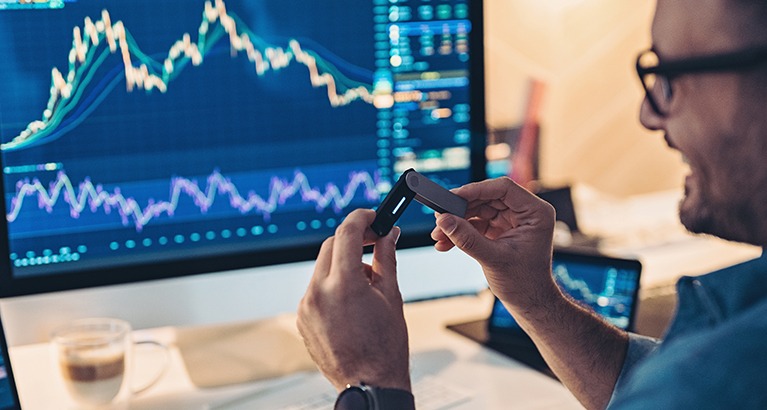
Crypto Trading Automation: The Future of Trading
In the rapidly evolving world of finance, Crypto Trading Automation http://recursosanimador.com/scripts/librovisitas2.php?pagina=9595 trading automation has emerged as a game changer for investors seeking to navigate the volatile waters of cryptocurrency trading. Automation bridges the gap between the complexity of trading and the need for efficiency, enabling traders to optimize their strategies without the constant need for manual intervention.
Understanding Crypto Trading Automation
At its core, crypto trading automation involves using technology such as bots, algorithms, and advanced trading platforms to execute trades on behalf of the user. This automation leverages real-time market data and analytics to make informed trading decisions faster than a human trader could respond. By eliminating emotional decisions and human errors, automation creates a streamlined trading process that can operate 24/7.
Benefits of Crypto Trading Automation
The advantages of automated trading are numerous:
- Increased Efficiency: Automated trading systems can process vast amounts of data swiftly, enabling faster decision-making and execution of trades.
- Emotion-Free Trading: Human emotions can cloud judgment, leading to impulsive trading decisions. Automation helps mitigate this risk by making objective, data-driven decisions.
- 24/7 Trading: The cryptocurrency market operates around the clock, and automated systems can continue trading even when the user cannot monitor the market.
- Backtesting Capabilities: Traders can test their strategies against historical market data to determine their effectiveness before deploying them in live trading.
- Improved Risk Management: Automation helps implement risk management strategies like setting stop-loss orders and diversifying portfolios automatically.
How Crypto Trading Bots Work
Crypto trading bots operate through various algorithms that analyze market trends, price movements, and trading signals. The bots can be programmed to follow specific strategies, from simple rule-based systems to complex AI-driven models. Here’s a step-by-step breakdown of how they function:
- Market Research: Bots gather and analyze data from multiple cryptocurrency exchanges and news channels to establish a trading strategy.
- Signal Generation: Algorithms generate trading signals based on market indicators like moving averages, volume, and volatility.
- Execution: Once a buy or sell signal is identified, the bot executes the trade automatically, often at speeds much faster than a human could achieve.
- Monitoring: After executing the trade, the bot continuously monitors the market, ready to react to changing conditions.
Choosing the Right Trading Automation Tool
With numerous crypto trading bots available, selecting the right tool requires careful consideration. Here are some crucial factors to evaluate:
- Reputation: Research the bot or platform’s reputation. Read reviews, check community feedback, and verify its performance history.
- Ease of Use: The platform should be user-friendly, accommodating both novice and experienced traders.
- Features: Look for vital features like customization options, backtesting capabilities, and risk management tools.
- Security: Ensure the platform uses strong security measures to protect your data and funds.
- Supported Exchanges: Verify that the bot supports the cryptocurrency exchanges you plan to use.
Automation Strategies in Crypto Trading

Automated trading is not just about executing orders; it encompasses various strategies designed to mitigate risks while maximizing profits. Some common strategies include:
Arbitrage Trading
This strategy exploits price differences between exchanges. For example, if Bitcoin is priced lower on one exchange than another, a bot can buy at the lower price and sell at the higher price, capturing profit from the difference.
Trend Following
Trend-following strategies aim to capitalize on market momentum. Bots equipped with trend analysis algorithms can enter or exit positions based on established trends.
Market Making
Market-making strategies involve placing buy and sell orders to profit from the spread between the bid and ask prices. Automated bots can assist in ensuring liquidity and executing multiple transactions efficiently.
Mean Reversion
This strategy is based on the assumption that asset prices will revert to their historical average over time. Bots identify these opportunities and execute trades accordingly.
Challenges and Risks of Crypto Trading Automation
While the benefits of crypto trading automation are substantial, there are challenges and risks to consider:
- Market Volatility: Cryptocurrencies are notoriously volatile. A poorly designed bot can lead to significant losses during rapid price shifts.
- Dependence on Technology: Automation systems can fail or be subject to technical glitches. It’s crucial to monitor bots regularly to ensure they perform as expected.
- Over-optimization: Traders may create strategies tailored to historical data that don’t perform well in real market conditions. This phenomenon is known as overfitting.
- Security Risks: Automated trading systems can be targets for hackers. Traders must ensure their platforms are secure to prevent unauthorized access.
Conclusion: Embracing the Automation Revolution
As crypto trading continues to grow in popularity, automation is emerging as a critical component of successful trading strategies. By embracing automated trading, investors can enhance their trading efficiency, manage risks, and ultimately improve their profitability.
In a landscape that moves as quickly as cryptocurrencies, staying ahead of the game is vital. Crypto trading automation opens the door to a world of opportunities for those willing to adapt and harness the power of technology. Whether you’re a seasoned trader or new to the crypto space, automation could be the key to realizing your trading goals.


 Casinos un peu avec jouer du casino lucky haunter brique profond : Votre top 2025
Casinos un peu avec jouer du casino lucky haunter brique profond : Votre top 2025
Leave a Comment... Discuss!